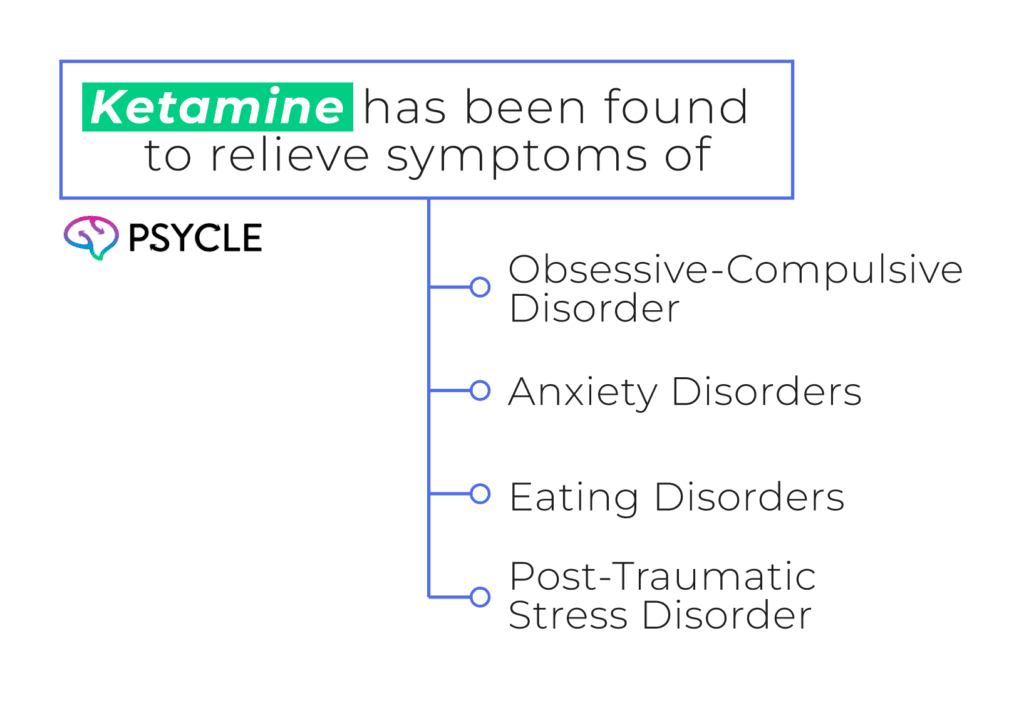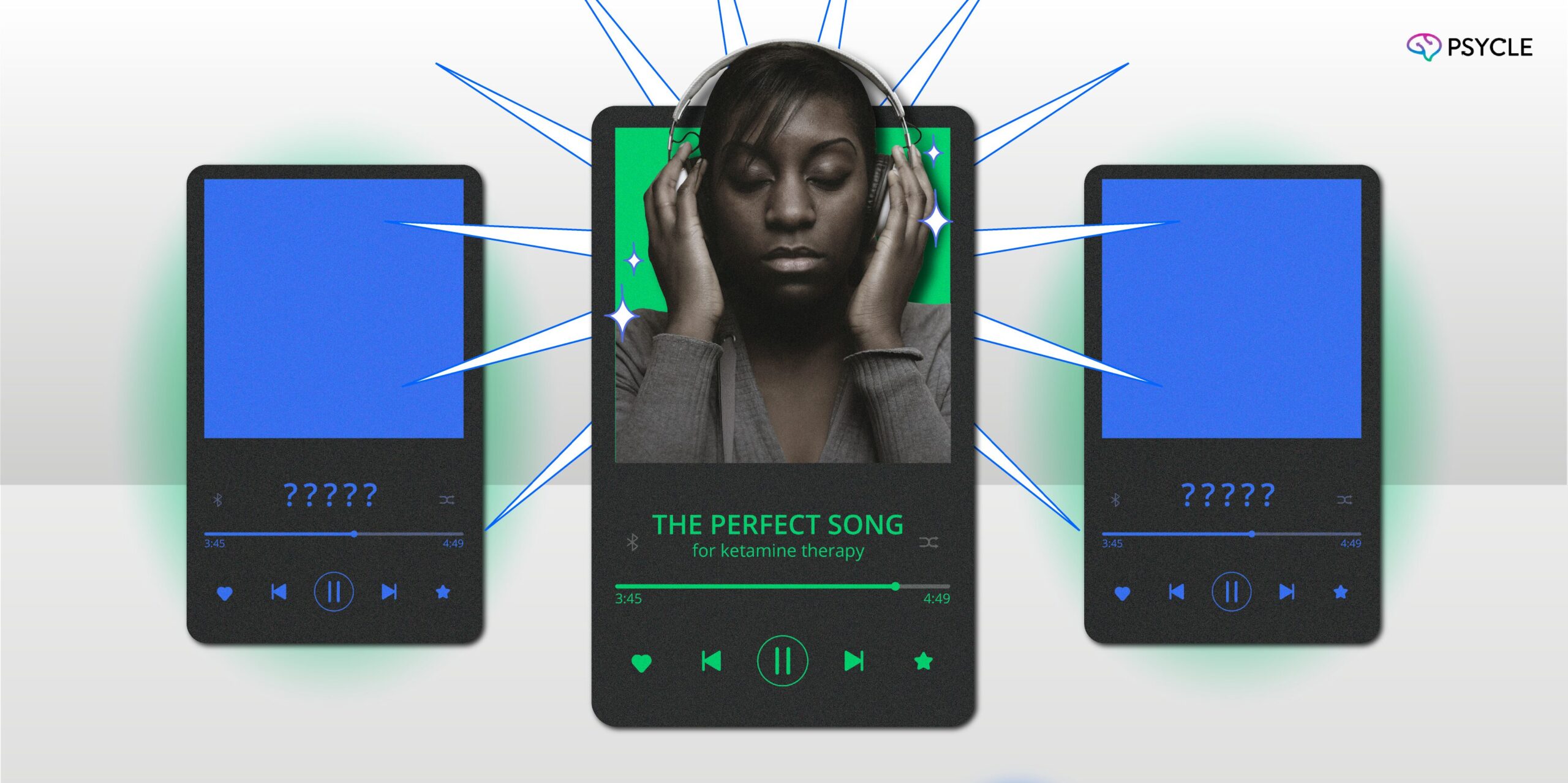In recent years, ketamine-assisted psychotherapy has become a promising new treatment for various mental health disorders. This therapy combines ketamine with carefully selected music to enhance the healing process, using the drug’s unique effects to help patients make emotional breakthroughs.
This article will explore the science and benefits of combining ketamine and music and some key considerations when choosing playlists.
Key Takeaways
- Music plays a crucial role in enhancing the therapeutic effects of ketamine, evoking emotions and facilitating psychological insights.
- The combination of ketamine and music can increase neuroplasticity, helping patients rewire negative thought patterns more effectively.
- Different phases of ketamine therapy benefit from tailored music playlists, from relaxing ambient music at the start to emotionally moving tracks during exploration.
- Patient involvement in music selection can enhance the therapy’s effectiveness and help create a sense of safety and comfort.
The Rise of Ketamine-Assisted Psychotherapy
In the early 2000s, researchers observed that sub-anesthetic doses of ketamine had rapid antidepressant effects in patients with major depressive disorder (MDD), especially those who had not responded to traditional treatments.
Numerous studies have since been conducted, showing that ketamine can provide rapid relief from depressive symptoms, sometimes within hours. This is a stark contrast to traditional antidepressants, which typically take weeks to become effective. Ketamine has also been found to relieve symptoms of multiple other psychiatric disorders, including
In mental health care, ketamine is administered in two models. The psychiatric model involves low-dose intravenous or intranasal administration under medical supervision. This model is primarily used to treat severe and treatment-resistant depression, providing rapid relief of symptoms.

The psychedelic-assisted model incorporates higher doses of ketamine to evoke an altered state of consciousness, taking advantage of ketamine’s dissociative effects. This state can facilitate emotional breakthroughs and psychological insight, which, when used alongside psychotherapy, can help people understand their traumas and change their negative thoughts and patterns accordingly.
The Role of Music in Psychedelic Therapy
@breakthepsycle_ curate your journey 🔮🌈🫧 #mentalhealthtreatment #therapytok
♬ Timeless (instrumental) – no/vox & karaokey
For hundreds of years, psychedelic-using communities across the globe have recognized the power of combining altered states of music. For instance, shamans of the Shipibo people of the Amazon – sing Icaros, or magic songs, during ayahuasca ceremonies.
They believe these songs are a medium for communication with plant spirits, which helps them heal people when using ayahuasca medicinally.
In clinical practice, music has been an integral part of psychedelic therapy and has been played during these therapeutic sessions since the 1960s.
During ketamine-assisted psychotherapy therapy, patients typically lie down in a relaxed position while wearing a blindfold and drawing their attention inward. A carefully curated playlist, designed to support the patient’s journey, is played through either headphones or a surround speaker.
In 2018, researchers from Imperial College London interviewed psychedelic therapy patients to investigate how music impacted their experiences and healing. Their analyses revealed music had a strong impact, but this could be both positive and negative.
The interviewees said music helped evoke meaningful and therapeutically useful emotions and mental imagery. It also offered a sense of guidance and openness and the promotion of calm and a sense of safety. However, for some, music had a negative effect, evoking unpleasant emotions and imagery, and making patients feel misguided.
Importantly, the patient’s music experience determined how well they responded to the treatment. Music was found to be more important than the intensity of the drug itself.
Though psilocybin therapy patients were included in this interview, rather than ketamine patients, it’s plausible that music has a similar effect on both drug experiences and therapy. Anecdotes from people who have had ketamine infusions describe music as being an essential part of their journey. Similarly to the study, its influence is described as both positive and negative.
Neurological Mechanisms of Music and Ketamine
Listening to music increases blood flow to the brain’s auditory cortex and other areas, including the limbic system, the part of the brain involved in emotional processing. This effect could explain the power of music to evoke strong emotions and how it can enhance emotional release during ketamine therapy.
Additionally, music can activate the hippocampus, the brain’s memory center. This effect could explain why music can help bring up memories and may be important for ketamine therapy, in which patients are encouraged to explore their past.
The Therapeutic Benefits of Music
Psychological Benefits
Music has been found to significantly reduce stress and anxiety by lowering cortisol, the body’s stress hormone. This may be particularly important in ketamine therapy, as many patients may feel nervous about their journey. It can also help people explore and release emotions and improve focus and attention.
Increases Neuroplasticity
Music has been shown to increase neuroplasticity, the brain’s ability to change and adapt. Ketamine can also increase neuroplasticity, and researchers have proposed this as a major mechanism for its therapeutic effects. By increasing the capacity to “re-wire” nerve circuits, the synergistic effect of ketamine and music could help patients change their negative thought patterns and behaviors more easily.
Reduces Blood Pressure
In one clinical study, the researchers investigated how music could help improve the physical side effects of ketamine. They demonstrated that music helped prevent the patient’s blood pressure from rising to concerning levels, which happens in around 20% of all IV injections for treatment-resistant depression.

Best Music for Ketamine Therapy
In ketamine therapy, practitioners often play ambient and classical music. These genres offer soft, slow beats and calming melodies that help soothe racing thoughts and enhance focus on the therapeutic experience. The lack of lyrics in most ambient and classical pieces is also beneficial, as lyrics can be distracting during therapy.
Nature sounds may also be incorporated as this further creates a calming environment. Nature exposure is also considered a mental health therapy in itself.
Some well-recommended playlists for ketamine therapy include:
John Hopkins – Music for Psychedelic Therapy
East Forest – A Soundtrack For The Psychedelic Practitioner, Vol. II
Any Psychedelic Therapy playlist by music and psychedelics researcher Mendel Kalen
Spotify Playlists for Ketamine Therapy
Looking for a playlist to accompany you in your next ketamine therapy session? Here are a couple of recommended playlists:
Curating Playlists for Different Phases
Adding music to ketamine-assisted psychotherapy involves thinking about each phase. It’s important to choose the right music for every step. Doing this helps patients better through their process and improves the therapy’s effects.
Initiation: Setting the Tone
At the start, music can help relax and support the patient. Ambient and classical music are good choices. They help create a safe, calming place to begin the journey.
Exploration: Diving Deeper
In the exploration phase, music shifts to a more introspective kind. It’s about guiding patients into a journey of self-discovery. This music should be emotionally moving, helping patients go deeper within themselves.
Integration: Grounding and Processing
Afterwards, music aids in processing and grounding the experience, helping to bring patients back to their normal state.
Considerations for Practitioners
When adding music to ketamine therapy, considering patient likes is key. Patients should be able to share their music choices, and they might even create their own playlists. This can make therapy more effective and help patients feel safe.
In general, practitioners should use relaxing ambient music, without lyrics, to avoid patients being distracted from their own journeys.
Wavepaths researchers studying music for psilocybin therapy identified three aspects of music that were important for enhancing the patient’s journey. These were:
- Liking the music
- Feeling the music resonate with their emotional state
- Feeling open to the experiences and imagery evoked by the music
Regarding the music sound system, Wavepaths also highlighted some key considerations, including:
- Using noise-isolating headphones, especially if there may be noise pollution in the therapy room
- Maximizing comfort with well-built headphone designs
- Considering using an external audio interface so music can be supplied to both headphones and speakers simultaneously
- Using high-quality headphones with proper music volume attenuation
- Avoiding Bluetooth to avoid audio glitches
FAQs
How Does Ketamine Differ from Traditional Antidepressants in Treating Depression?
Ketamine provides rapid relief from depressive symptoms, often within hours, unlike traditional antidepressants, that typically take weeks to become effective. Ketamine also has different neurological mechanisms to traditional antidepressants. Whereas commonly prescribed antidepressants increase serotonin in the brain, ketamine interacts with the glutamate system.
Why is Music an Important Component in Ketamine-Assisted Psychotherapy?
Music helps evoke meaningful emotions and mental imagery, supports emotional breakthroughs, and enhances the overall therapeutic experience by creating a calming and focused environment.
What Types of Music are Typically Used During Ketamine Therapy Sessions?
Practitioners often use ambient and classical music due to their soothing melodies and lack of distracting lyrics, sometimes incorporating nature sounds to further enhance relaxation.

